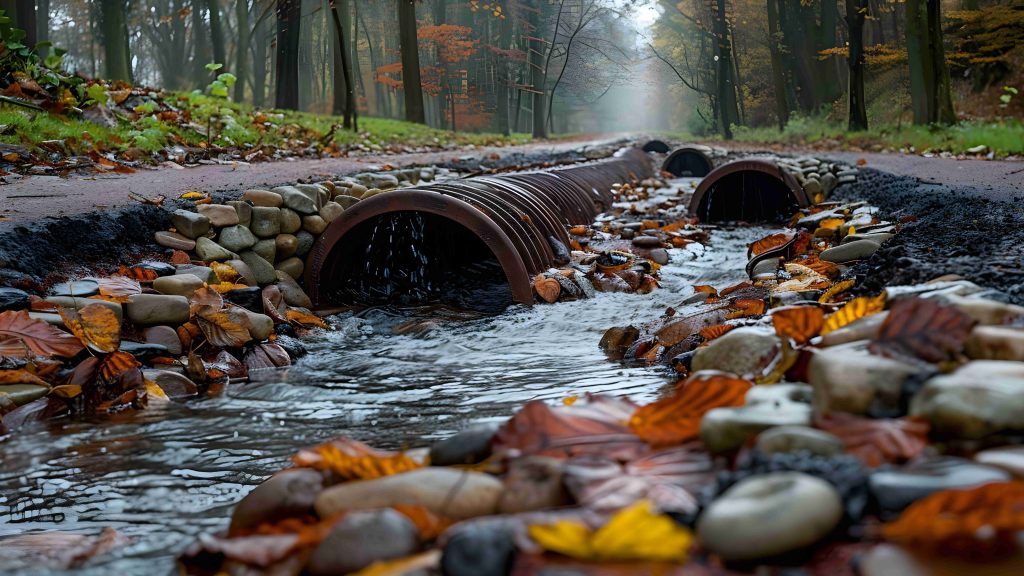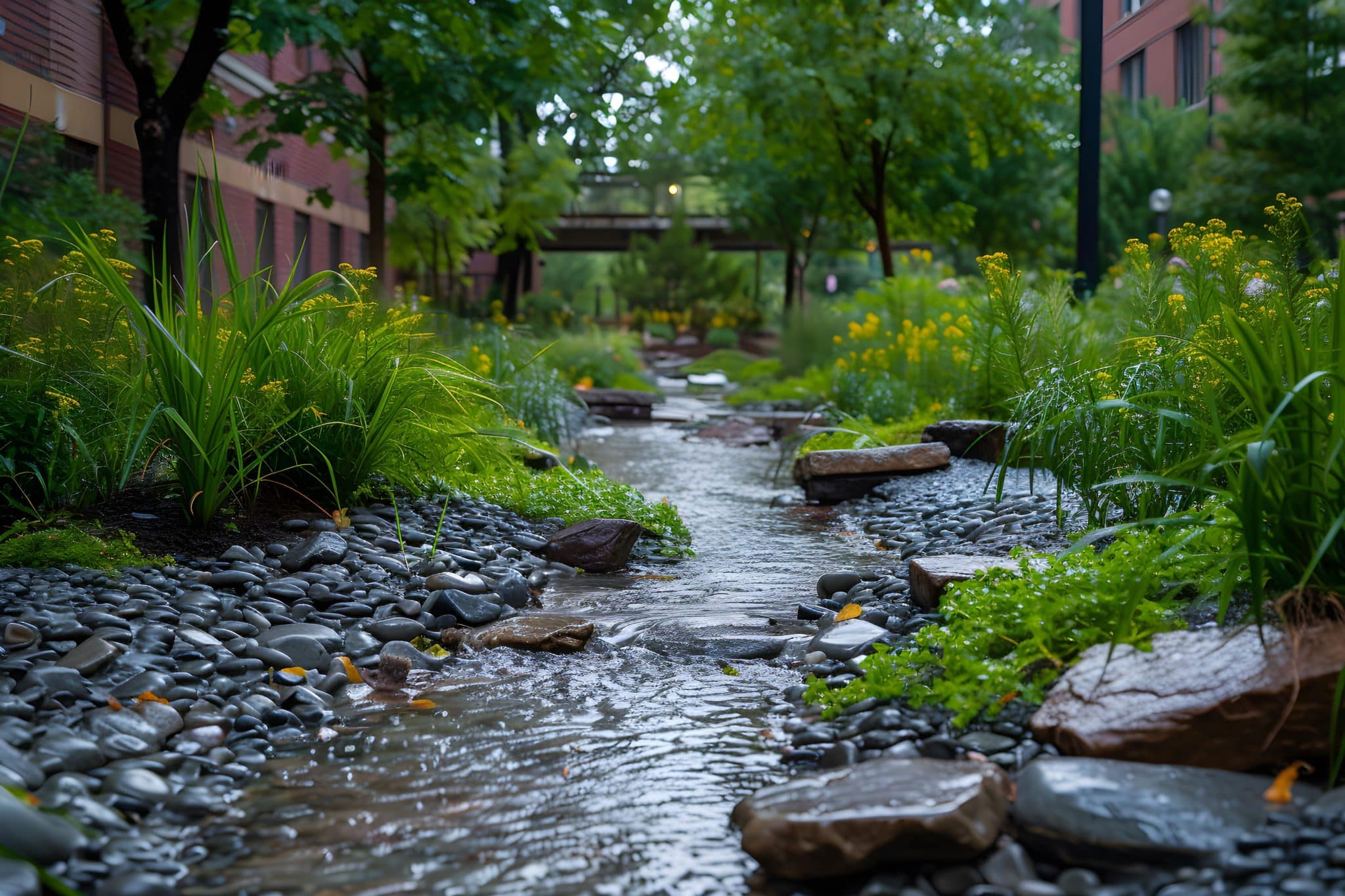How To Manage Stormwater Runoff: A Practical Guide For Homeowners
With every rainfall, your yard does something amazing. It acts like a big sponge, taking up the rainwater and filtering it before it makes its way to the streams, rivers, and, ultimately, to the oceans. But what happens if your yard gets overwhelmed? That’s where stormwater runoff comes in.
Stormwater runoff is rainwater that doesn’t get absorbed by the ground. Instead, it races off rooftops, driveways, and patios, picking up pollutants along the way. This polluted water creates havoc on the waterways by degrading the water quality and harming wildlife.
Thankfully though, you can be a part of the solution. You can help minimize runoff, prevent soil loss in your yard, and add to a much healthier environment through the use of the following easy practices of stormwater management on your property.
Assess Your Landscape
Before you explore various stormwater solutions, take a moment to become a water detective! Grab a cup of coffee and head outside after a good rain. Observe the following:
Pooling
Make a note of any areas where water tends to accumulate and stagnate. This can indicate poor drainage or low spots in your yard.
Sheet Flow
Notice how runoff moves across your property. Does it flow in a concentrated stream or as a thin sheet of water? Uncontrolled sheet flow can lead to erosion.
Exit Points
Identify the natural or man-made channels where water eventually exits your property. This could be a curb cut, ditch, or storm drain.
These observations will give you the key insights into the water flow patterns of your landscape. This information will come in handy while selecting a proper stormwater system or management solution in your yard. However, if you feel the problem is due to your water lines themselves, you really need to seek participation from some trustworthy, professional plumbers in Olathe, Kansas. These experts will diagnose and repair any problems you may have with your water lines.
Embrace The Power of Plants
Nature offers a beautiful and effective way to manage stormwater runoff. Here are some plant-based solutions you can incorporate into your yard:
Rain Gardens
These low-maintenance beauties are shallow, depressed gardens specifically designed to capture and soak up rainwater. Plant them with native wildflowers, shrubs, and perennials that thrive in moist conditions. Rain gardens not only manage runoff but also add a splash of color and attract pollinators!
Trees
Trees are like living umbrellas, intercepting rainfall with their leaves and slowing down their descent. Their extensive root systems also help infiltrate water back into the ground. Plant trees strategically around your property, especially near downspouts and paved areas. Opt for native species that are well-suited for your climate.
Native Lawns
Ditch the thirsty, high-maintenance turfgrass and embrace the low-mow charm of a native lawn. Native grasses are drought-tolerant and require less watering, allowing more rainwater to infiltrate the soil. Plus, they provide valuable habitat for butterflies and other beneficial insects.
Other than having a concrete stormwater pit, planting these beneficial elements into your landscape may help reduce stormwater runoff while creating a beautiful and vibrant yard.
Work With The Water
Don’t just let the rainwater run off your property. Here are some ways to capture and utilize it:
French Drains
These underground trenches filled with gravel help channel excess water away from your foundation and towards rain gardens or other infiltration areas.
Permeable Pavements
Forget about the traditional concrete for driveways, walkways, and patios. Permeable pavements, such as gravel pavers or interlocking concrete pavers, allow rainwater to seep through the surface and replenish groundwater.
Rain Barrels
Install rain barrels under your downspouts to collect rainwater. This free, natural resource can then be used to water your plants during dry spells, saving you money on your water bill.
These water management techniques help conserve a valuable resource. It can also protect your property from water damage and contribute to a more sustainable environment.

Small Changes, Big Impact
Even minor adjustments to your daily habits can make a big difference:
Disconnect Downspouts
Traditionally, downspouts channel rainwater directly into storm drains. Disconnecting them and directing the flow towards rain gardens or vegetated areas allows for better infiltration.
Minimize Impervious Surfaces
Impervious surfaces like concrete and asphalt prevent water from soaking into the ground. Consider replacing some paved areas with gravel or leaving space for natural vegetation.
Compost Yard Waste
Composting kitchen scraps and yard waste reduces the need for fertilizers, which can contribute to water pollution when they wash away with runoff.
Doing these small tweaks enables you to manage water better in your neighborhood and cut down on pollution. Over time, this leads to healthier local ecosystems and a more sustainable community for everyone.
Conclusion
By managing stormwater runoff on your property, you’re doing more than just helping your yard – you’re pitching in for a healthier environment all around. Less runoff means cleaner waterways, better water for wildlife and people, and less stress on our storm drains. Every drop counts!
So why not roll up your sleeves, let your imagination run wild, and step into your role as a backyard water hero? After all, a thriving yard starts with smart rain management. Who knew being eco-friendly could be so much fun?







